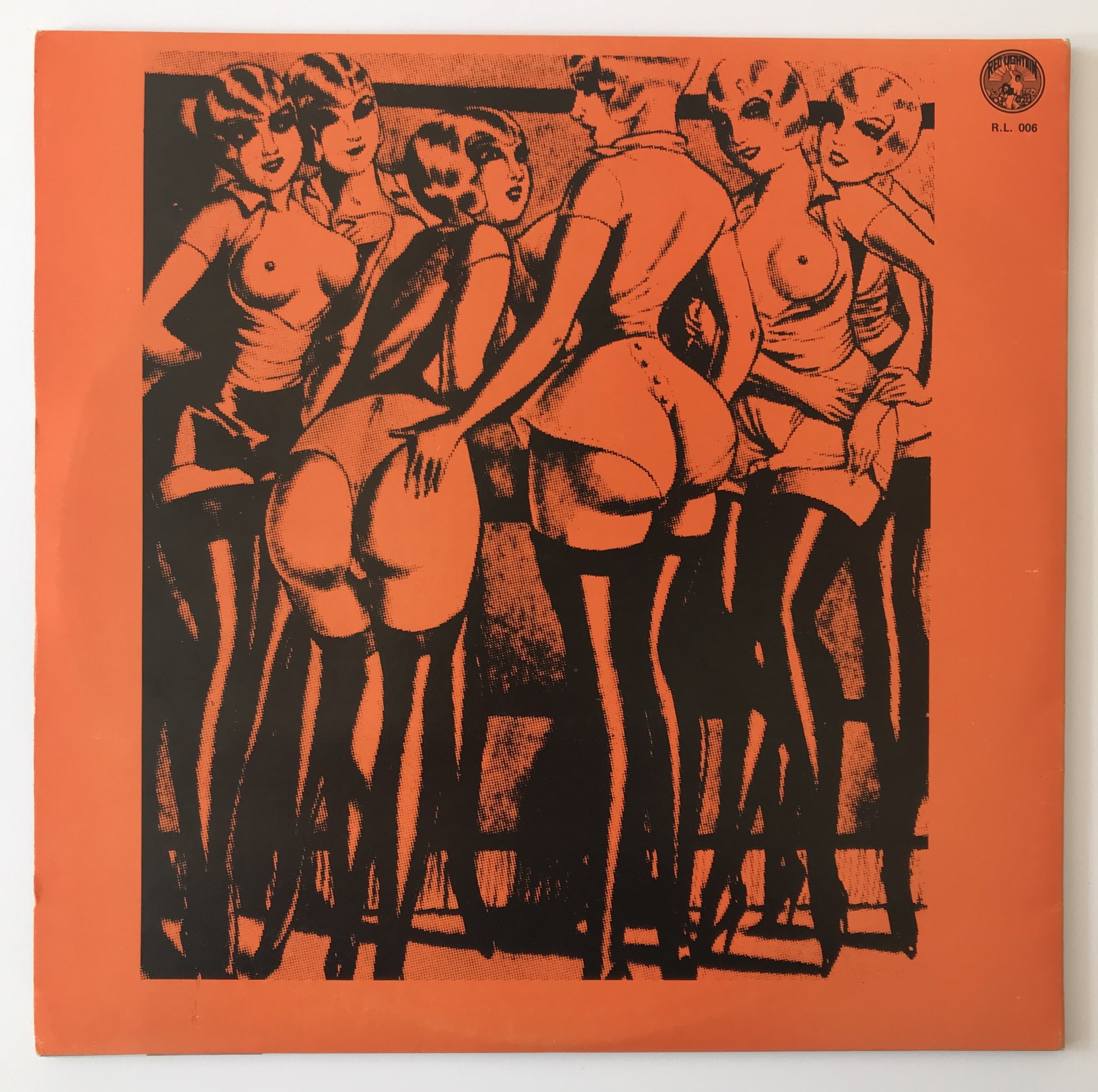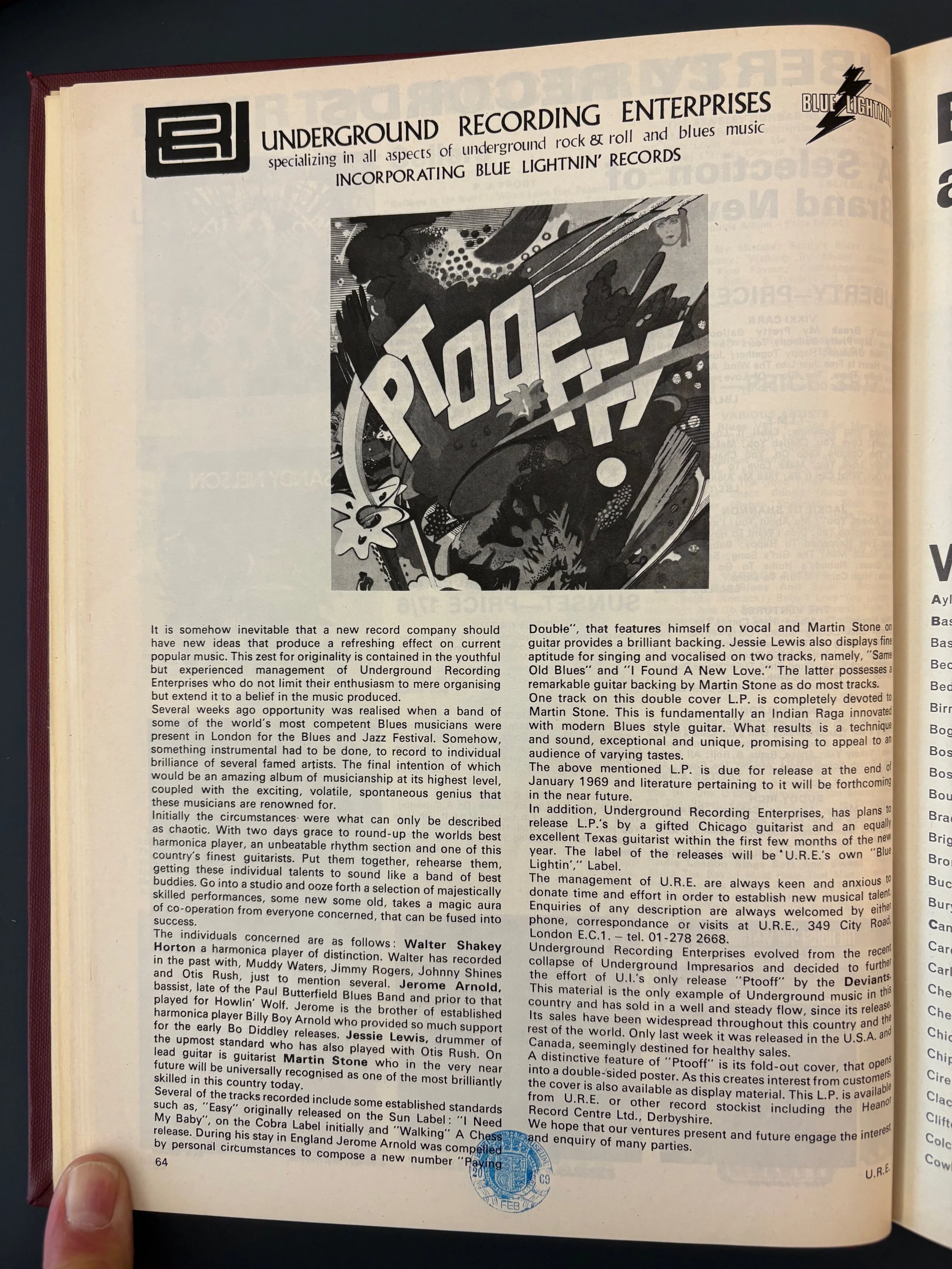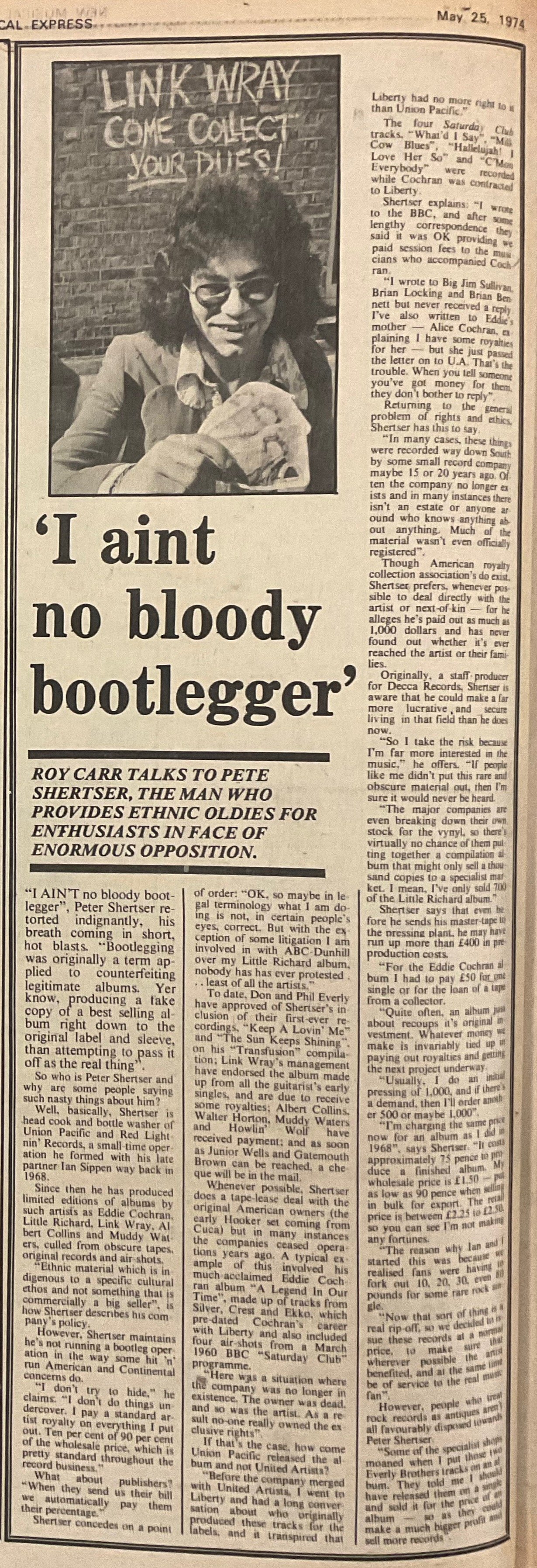If Chris Spedding had never done anything more than record Motor Bikin’ he’d still be alright with me. In my pantheon he ranks not just for the spade work he did with Bryan Ferry on Let’s Stick Together and John Cale on Helen of Troy but also for his oversight of the first Sex Pistols and Cramps demos. A player with style and attitude to spare, I have a near complete collection of his RAK sides but, excepting the superlative 45 on Island, ‘My Bucket’s Got A Hole In It’, I never thought to bother much with his earlier lone efforts. His pre-1975 solo releases have zero critical cache but as his 1972 Harvest LP, The Only Lick I Know, was available for less than £15 on eBay (I was the only bidder), and I liked the sleeve, I took a punt.
The art work, put together by Bob Cotton, belongs to a subset of the 1970s retro cutie airbrush genre (roll down to Feb. 2020). On the front, Bazooka Joe and spunking phallic symbols are slapped over a chorus line of long limbed gals. On the rear, behind the image of our hero and the album’s credits is a collage of 1940s/50s American porn comic strip figures of the kind that Mick Farren and J. Edward Barker would litter the pages of IT with and that the latter used on some of his sleeves for the Pink Fairies and a Red Lightnin’ blues album (roll down to May 2019). The music is none to shoddy either, Honky Tonk Blues has a great guitar solo and his own composition Don’t Leave Me should have merited a John Cale cover version. All said, not at all the deary prog rock prospect I was led to expect. Nor is it a truly tasty set of rock ‘n’ pop sides as found on his best album Hurt (1977)
Bob Cotton was also responsible for this plate of retro cutie for the UA label (click on the RnR Revival tag to see the series this LP belonged to)
Spedding shows style and attitude galore on the sleeve for Motor Bikin’
Spanish pic sleeve
From a Swedish poster magazine overpriced on eBay
The above images show how to use a jukebox to capture that 50s into 70s feel without looking like a deadbeat. . . Here’s how not to do it:
Yakety Yak . . . looking like the Skegness holiday camp answer to Sha Na Na
And cool as Mud . . .































